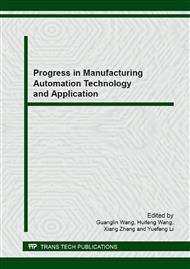p.228
p.234
p.241
p.248
p.253
p.259
p.265
p.270
p.276
The Influence of Micro-Texturing Dimple on the Bearing Capacity of the Elastohydrodynamic Lubrication Based on CFD-FSI Fluid-Solid Coupling
Abstract:
Based on the CFD-FSI fluid-solid coupled method, the equivalent elastohydrodynamic lubrication model of the micro-texturing dimple surface on the condition of the medium velocity and medium load, low velocity and heavy load, high velocity and heavy load, low velocity and light load and high velocity and light load is respectively solved by numerical method in this paper. And obtain the oil film pressure distribution curve and the oil the film thickness distribution curve on the conditions of steady state, and analyze the influence of micro-texturing dimples on the bearing capacity of the equivalent elastohydrodynamic lubrication model. Analysis results show that: compared with the corresponding minimum film thickness on the conditions of smooth surface, the minimum film thickness of micro-texturing dimple surface on the conditions of the medium velocity and medium load, low velocity and light load is increased, which indicates the bearing capacity of the equivalent elastohydrodynamic lubrication model of the micro-texturing dimple surface is increased; while the minimum film thickness of the rest conditions is decreased, which shows that the bearing capacity of the equivalent elastohydrodynamic lubrication model of the micro-texturing dimple surface is decreased. The study in this paper lays the foundation for the design and optimization of the micro-texturing dimple.
Info:
Periodical:
Pages:
253-258
Citation:
Online since:
September 2013
Authors:
Price:
Сopyright:
© 2014 Trans Tech Publications Ltd. All Rights Reserved
Share:
Citation:


